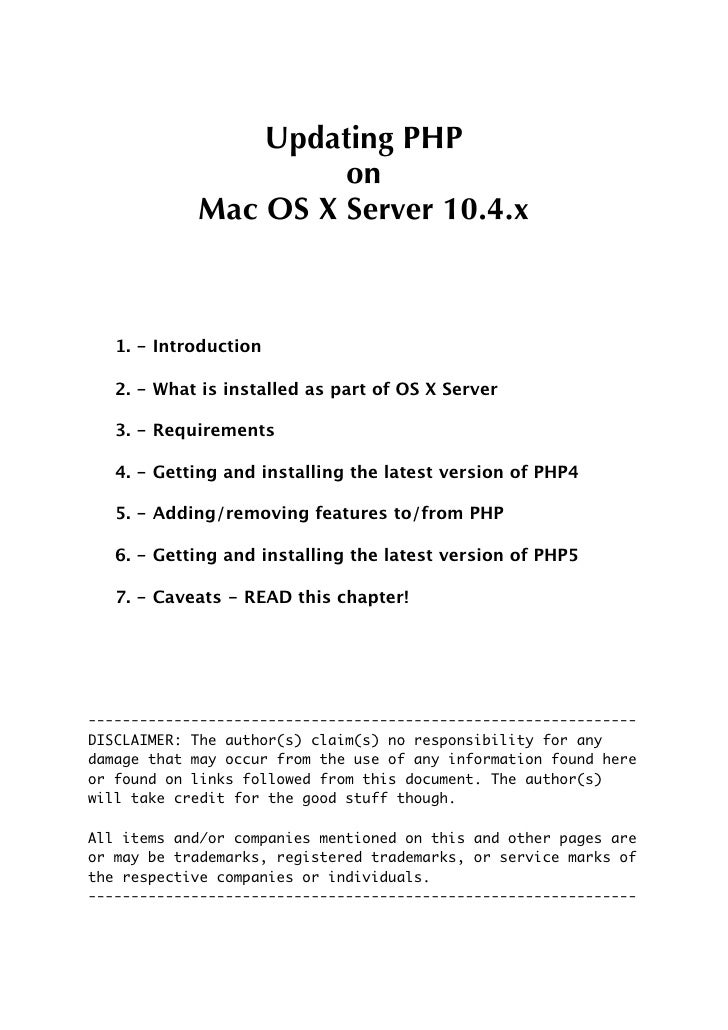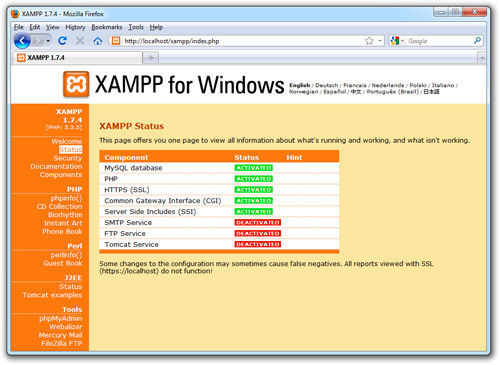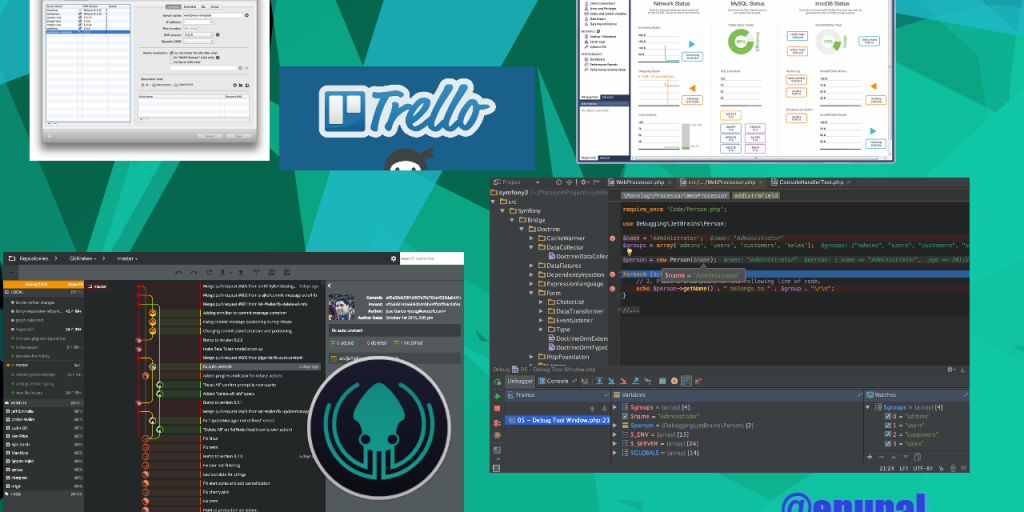MacOS Server brings even more power to your business, home office, or school. Designed to work with macOS and iOS, macOS Server makes it easy to configure Mac and iOS devices. It’s also remarkably simple to install, set up, and manage. Add macOS Server to your Mac from the Mac. OS X: You need only one tiny command to start a web server from any directory through OS X's terminal. If you've got a web site lying around and need to test it out, this is possibly the. Setting up a local web server with PHP on MAC OS X. Posted on December 1, 2016, 2:35 pm, by Ilan Hazan, under Apache, Mac OS X, PHP. Mac OS X runs atop UNIX. Apache and PHP come packaged with OS X. To create a local web server, all you need to do is enable them. Starting Appache. Set up your own web server. OS X El Capitan OS X Yosemite OS X Mavericks. Display machines, Mac users, IPs on the local network. Free Installation utility for Apache, MySQL, PHP.
I mainly do web development on my 15 in Macbook Pro. Mac runs on base Unix foundation so mainly you could install almost all Linux/Unix software on Mac very easily.

Mac OS X comes by default with ApacheWeb Server and PHP. In this tutorial we will go over steps on how to enable those on Mac.
Let’s get started:
Enable Apache Web Server
Step-1
Open terminal App and run below command:
Step-2
Open browser and check with URL: http://localhost
Enable PHP Module and verify Perl module
Step-1
Open Terminal App. Mac OS X comes by default with Perl library. Just type below commands to check Perl and PHP Setup.
2 4 6 8 10 12 14 16 18 | /usr/bin/perl bash-3.2# pwd total120 -rw-r--r--1root wheel13077Sep92014magic drwxr-xr-x14root wheel476Sep92014extra -rw-r--r--1root wheel20786Sep92014httpd.conf -rw-r--r--1root wheel20786Jun913:55httpd.conf.bak bash-3.2# vi httpd.conf |
Step-2
Open file httpd.conf file. You may use any Text Editor also.
Uncomment the following line (remove #): LoadModule php5_module libexec/apache2/libphp5.so
Step-3
Restart Apache Web Server:
Step-4
- Find
DocumentRootfromhttpd.conffile. In my case it’s/Users/crunchify/Documents/Blogs/MAMPas I’m using MAMP on my Mac. - You may have diff folder something like
/Library/WebServer/Documents/. - Create below file
crunchify-php-on-mac.phpunder your DocumentRoot folder. - If you don’t see folder
Web Serverthen just create it 🙂
2 4 6 8 | <head> </head> <?phpecho'<p>Hello World - PHP Testcase on Mac OS X by Crunchify.com..</p><br>Have a fun. Enjoy.';?> </html> |
Step-5
Now visit this URL: http://localhost/crunchify-php-on-mac.php and you should see php file loaded successfully on browser.
How to Kill Apache httpd process on Mac?
Just incase if you need to kill apache httpd process on Mac then you could use below commands.
2 | sudo launchctl unload/System/Library/LaunchDaemons/org.apache.httpd.plist |
Enjoy and Happy coding…
Join the Discussion
If you liked this article, then please share it on social media or leave us your comments. Limited time 3 months free WPEngine hosting.
Other Popular Articles..
macOS Update: While these instructions still work, there are new posts for recent versions of macOS, the latest being Install Apache, PHP, and MySQL on macOS Mojave.
PHP Update: Mac OS X El Capitan comes pre-installed with PHP version 5.5 which has reached its end of life. After you complete this post, you should upgrade PHP on Mac OS X.
Note: This post is for new installations. If you have installed Apache, PHP, and MySQL for Mac OS X Yosemite, read my post on Updating Apache, PHP, and MySQL for Mac OS X El Capitan.
Mac OS X runs atop UNIX. So most UNIX software installs easily on Mac OS X. Furthermore, Apache and PHP come packaged with Mac OS X. To create a local web server, all you need to do is configure Apache and install MySQL.
I am aware of the web server software available for Mac OS X, notably MAMP. These get you started quickly. But they forego the learning experience and, as most developers report, can become difficult to manage.
Running Commands

First, open the Terminal app and switch to the root user so you can run the commands in this post without any permission issues:
Enable Apache on Mac OS X
Verify It works! by accessing http://localhost
Enable PHP for Apache
First, make a backup of the default Apache configuration. This is good practice and serves as a comparison against future versions of Mac OS X.
Now edit the Apache configuration. Feel free to use TextEdit if you are not familiar with vi.
Uncomment the following line (remove #):
Restart Apache:
You can verify PHP is enabled by creating a phpinfo() page in your DocumentRoot.
The default DocumentRoot for Mac OS X El Capitan is /Library/WebServer/Documents. You can verify this from your Apache configuration.
Now create the phpinfo() page in your DocumentRoot:
Verify PHP by accessing http://localhost/phpinfo.php

Install MySQL on Mac OS X El Capitan
Download and install the latest MySQL generally available release DMG for Mac OS X.
The README suggests creating aliases for mysql and mysqladmin. However there are other commands that are helpful such as mysqldump. Instead, you can update your path to include /usr/local/mysql/bin. Create a bootable usb stick for mac.
Server Php For Mac Os 10.13
Note: You will need to open a new Terminal window or run the command above for your path to update.
Finally, you should run mysql_secure_installation. While this isn't necessary, it's good practice to secure your database.

Connect PHP and MySQL

You need to ensure PHP and MySQL can communicate with one another. There are several options to do so. I do the following:
Additional Configuration (optional)
The default configuration for Apache 2.4 on Mac OS X seemed pretty lean. For example, common modules like mod_rewrite were disabled. You may consider enabling this now to avoid forgetting they are disabled in the future.
I edited my Apache Configuration:
I uncommented the following lines (remove #):
If you develop multiple projects and would like each to have a unique url, you can configure Apache VirtualHosts for Mac OS X.
If you would like to install PHPMyAdmin, return to my original post on installing Apache, PHP, and MySQL on Mac OS X.
Mac Os Php
Find this interesting? Let's continue the conversation on Twitter.

